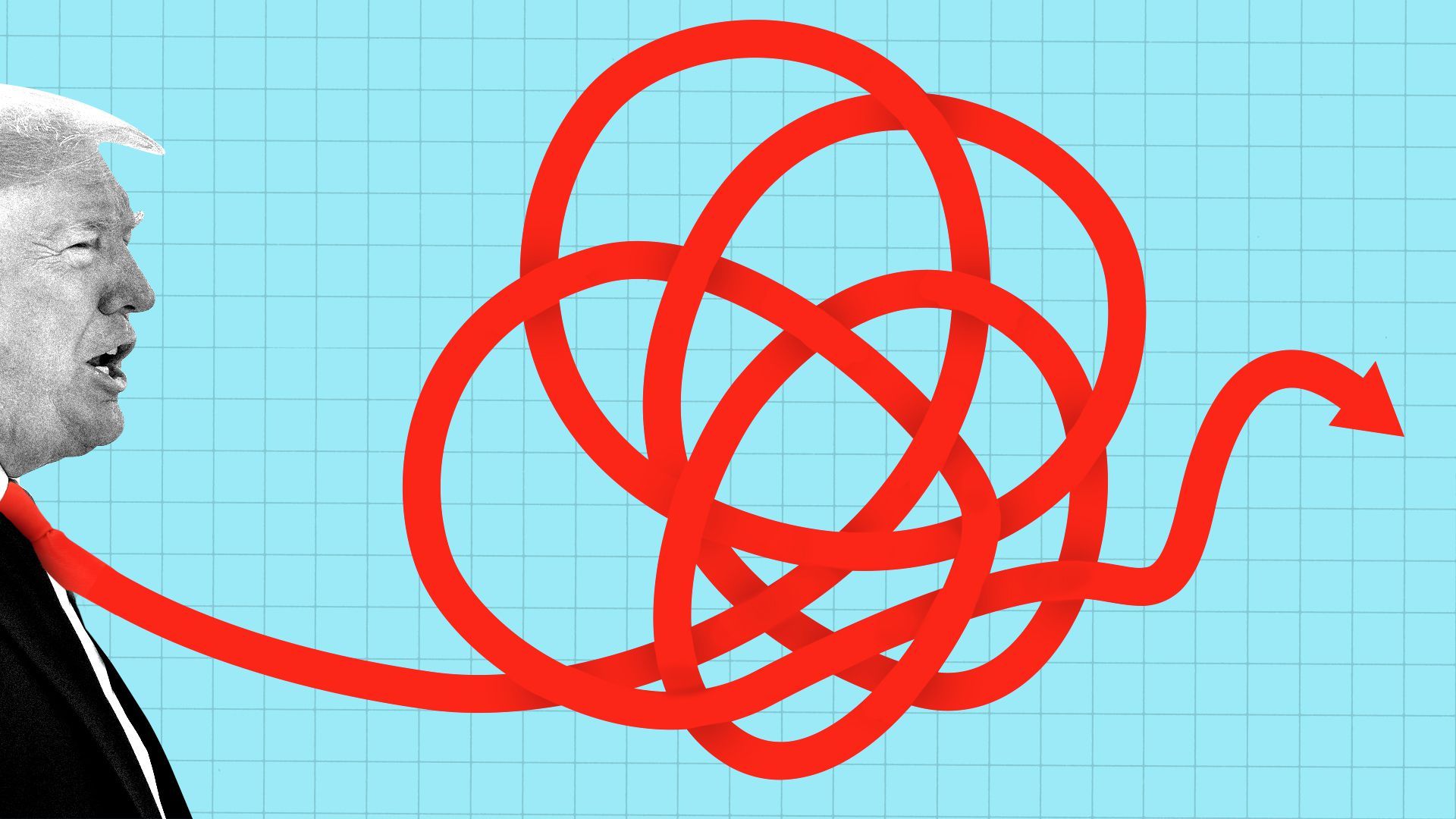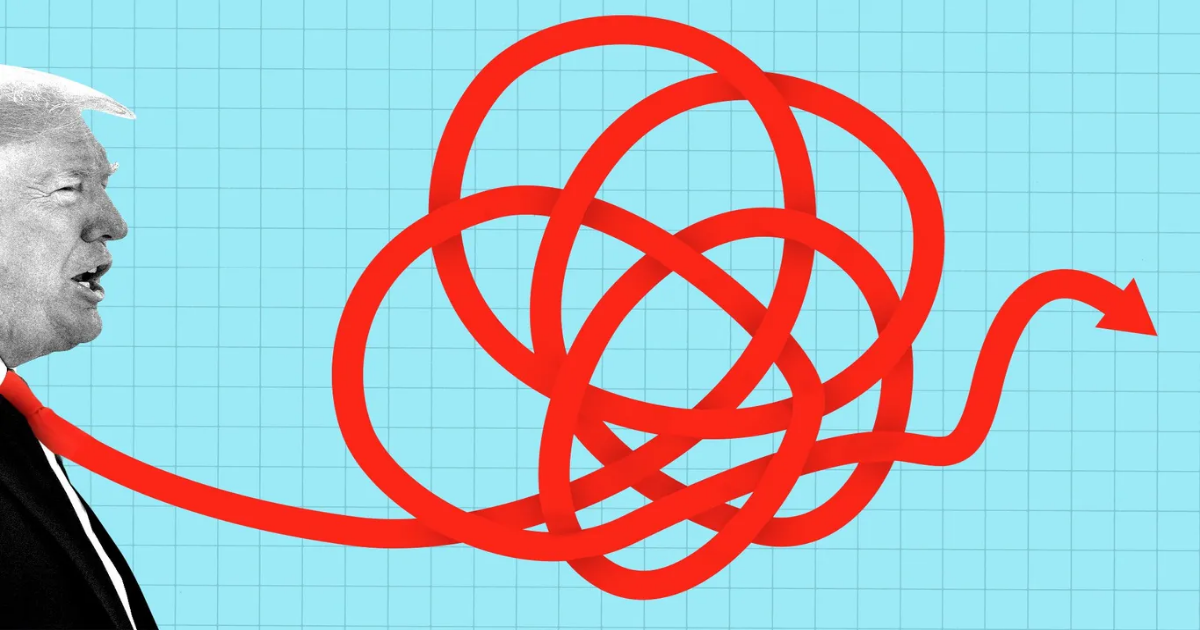 Photo illustration: Aïda Amer/Axios. Getty Images photo: Nicholas Kamm/AFP
Photo illustration: Aïda Amer/Axios. Getty Images photo: Nicholas Kamm/AFP
The underlying growth trend of the U.S. economy was quite solid to start the year.
- But the full range of data out Wednesday suggests reasons to worry about what comes next.
The big picture: The backward-looking aspects of Wednesday’s economic data releases are better than they look at first glance. The forward-looking ones are worse.
- In Q1, economic activity was generally solid as companies tried to front-run tariffs. But there are early warnings that April may have brought some gloom, and that inflation is elevated in ways that will limit the Federal Reserve’s willingness to cut rates in response to any deterioration.
- And the whipsaw effects driven by large-scale tariffs, paired with the usual lags and measurement problems in economic data, mean that we are entering a volatile period for the key gauges CEOs and policymakers rely on in their decision-making.
Driving the news: The U.S. economy shrank at a 0.3% annualized rate in the first quarter, the first contraction since 2022. This is the number that you will see in headlines, though it is something of a mirage.
- That drop primarily reflected a surge in imports, no doubt fueled by companies looking to bring in goods before they are heavily tariffed.
- Imports rose at a 50.9% annual rate in Q1 — a number exceeded once during the 2020 pandemic disruptions, but other than that, the highest since 1969.
- That subtracted a whopping 5 percentage points from overall GDP — but reflects more quirks in the accounting than a true economic deterioration.
Reality check: Real final sales to private domestic purchasers — the sum of consumer spending, housing investment and business spending — rose 3% in the first quarter. That is actually a tick better than the 2.9% increase in the final months of 2024.
- The first quarter also featured solid gains in payrolls, few jobless claims, and other measures pointing to stable growth.
Yes, but: The tariff-related policies are likely distorting more than just the import numbers. Business spending rose at a near 10% rate, boosted by a surge in equipment investment that might also have reflected efforts to buy ahead of tariffs.
- Consumer spending slowed, though it’s unclear how much of that is related to the California wildfires and an unusually frigid winter holding back spending.
- Consumers have signaled intentions to pull back in sentiment surveys, though it’s uncertain the degree to which that will translate into the real data.
What they’re saying: “There’s little fundamental implication for the economic outlook from this report,” economists at Morgan Stanley wrote in a note.
- “Demand was strong, but only before the shocks from tariffs, government layoffs, ongoing slowing in immigration, and other new policies that are likely to affect growth” in the current quarter.


Data: Bureau of Economic Analysis; Chart: Axios Visuals
The first quarter ended on March 31. Two days later, on April 2, President Trump unleashed “recriprocal tariffs” on nations around the world, generating a wave of financial market volatility and sapping business and consumer confidence.
- It is still early days in assessing whether that’s translating into less economic activity, or even a recession.
Zoom in: Payroll processor ADP said Wednesday morning that the private sector added just 62,000 jobs in April — less than half as many added in the previous month.
- “Unease is the word of the day,” said Nela Richardson, ADP’s chief economist, in the release. “Employers are trying to reconcile policy and consumer uncertainty with a run of mostly positive economic data.”
- “It can be difficult to make hiring decisions in such an environment.”
- Speaking to reporters, though, she noted that similar drops in job growth have been followed by hiring pickups the next month.
Zoom out: Meanwhile, the GDP report showed the Personal Consumption Expenditures Price Index increased at a 3.6% annual rate in Q1, well above the Fed’s 2% target and an uptick from 2.4% in Q4.
- With the trade war threatening to push consumer prices higher still, that’s a recipe for the Fed being more reluctant to respond to the kind of job market deterioration implied by those ADP numbers than they would be against a more benign inflationary environment.
The bottom line: “From our point of view the problems inside the GDP report are not just in a series of one-time distortions,” wrote RSM chief economist Joe Brusuelas in a note. Rather, it was the increase in prices.
- “Given the large price shock in train and the likelihood of unemployment rising throughout the remainder of the year it creates real problems for both the White House and the Federal Reserve,” he added.
Pete Gannon contributed to this story.
